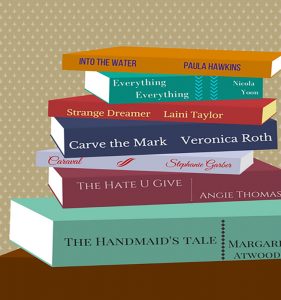
Women rise to the top of literature’s best sellers lists
Do the names Joanne Rowling, Nelle Lee, Karen Blixen or Amantine Lucile Aurore Dupin sound familiar? Maybe you recognize them by their pen names: J.K. Rowling, author of the popular Harry Potter series; Harper Lee, author of “To Kill a Mockingbird”; Isak Dinesen, author of “Out of Africa”; and George Sand, author of “Indiana”.
In the past, in order for their novels to sell, women would adopt a male pseudonym. In this day and age, due to the booming popularity of women’s literature, the opposite can be true. Some male authors have begun to adopt female pseudonyms to appeal to a new audience.

Although it may sound deceptive, Christine Adler, president of the Women’s Fiction Writers Association, believes the author’s choice of published name can often be based on book genre in order for the authors to separate their work.
“Publishing is a business, and a tough one at that,” Adler said. “Because it’s a business, we have to accept the fact that publishers market some books toward women and others toward men. But I think that has more to do with the type of story than the author’s gender.”
Adler said that there are a few men in the Women’s Fiction Writers Association that write under pseudonyms.
“I don’t believe they do it to be deceptive,” Adler said. “The men I know of (or have read about) who use a gender ambiguous name do it to separate their novels from previously published work, which may be in a different genre or in journalism for example.”
While both men and women may choose to use pseudonyms today, women have gone from having to disguise their identity to the top of several best-seller lists. For example, Goodreads top books of 2017 features seven female authors on their top ten list. Some of today’s prominent female authors, such as J.K. Rowling or Margaret Atwood, have seen their literary work translated into award-winning screen adaptations. The film adaptations of J. K. Rowling’s Harry Potter series grossed a record breaking $7.7 billion, second only to the popular Marvel cinematic universe. Margaret Atwood’s novel, ‘The Handmaid’s Tale’, has received a critically acclaimed television series adaptation, resulting in several Emmy awards and a second season.
Elizabeth Klett, associate professor of literature at UHCL, believes Margaret Atwood to be the most influential author of her time.
“She’s not only been at the forefront of her profession for a long time (since the late 1960s), but she has created a compelling and influential online presence more recently, through her embrace of new media,” Klett said. “She also does a lot to mentor young writers, and combines her literary fortitude with political (especially environmental) activism. Her profile right now is probably higher than ever, given the return of her novel ‘The Handmaid’s Tale’ to the best-seller list and its translation into a successful television series.”
Klett acknowledges that authors having their work translated into an award-winning movie or television show is a great accomplishment, but she believes that the collaboration of female authors and screenwriters is a much more telling accomplishment for women as a whole.
“I think it’s less important for books written by women to be adapted for film and television; there’s always been some parity in that realm with male authors,” Klett said. “What’s more important is that female screenwriters, producers and directors become involved in adapting those works for the screen.
Klett mentions that male written works still dominate the mainstream media but not for long.
“The aforementioned ‘The Handmaid’s Tale’ series, for instance, uses primarily women as directors and designers,” Klett said. “In fact, one of its directors just became the third woman ever to win best director of a drama series at the Emmy Awards.”
